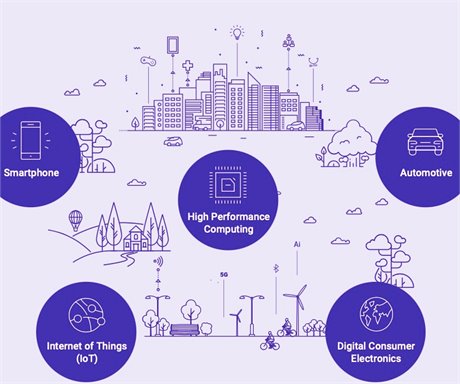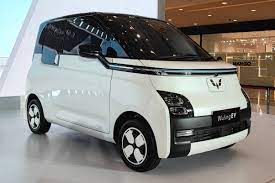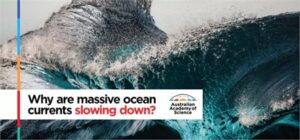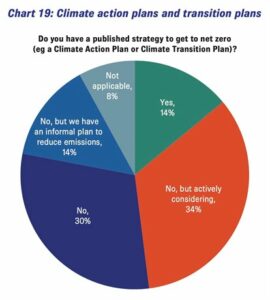By Jeremy Rose
Taiwan is a superpower in two things, I confidently declared in my pitch for an Asia New Zealand Foundation Travel grant, bicycles and semi-conductors and both are crucial on the fight against climate change
As far as elevator pitches go it wasn’t bad … except it turns out the manufacture of semi-conductors is a major contributor to Taiwan’s carbon emissions and while Taiwan is a giant when it comes to the manufacture of bicycles, they’re a rare sight on its urban roads.
A recent Greenpeace report illustrates just how energy intensive the manufacture of semiconductors is:
- The semiconductor manufacturing industry is on track to consume 286 terawatt hours (TWh) of electricity globally in 2030 – more than Australia’s 2021 electricity consumption.
- The industry is projected to emit 86 million metric tons of carbon dioxide equivalent (CO2e) in 2030 – more than Portugal’s total emissions in 2021.
- None of the major semiconductor manufacturers have made commitments in line with limiting global warming to 1.5 degrees.
- Taiwan’s TSMC – by far the dominant manufacturer of semi-conductors internationally – is projected to grow by 267% by 2030.
TSCM – one of Taiwan’s truely extraordinary economic success stories – in 2030 will consumer twice the amount of electricity consumed by New Zealand in 2021.
Currently under 10% of its electricity consumption is renewable.
Semiconductors are to Taiwan what cows are to New Zealand
Taiwan’s semiconductors is to it what the dairy industry is to New Zealand: an outsize driver of both exports and emissions.
And like the New Zealand’s dairy industry, Taiwan’s semiconductor industry makes dubious claims about its green credentials.
On its website TSMC highlights the role of its semiconductors in decarbonisation the world.
“TSMC continues to advance semiconductor manufacturing technologies and services to enable our customers to unleash more than 12,300 chip innovations in 2021. These innovations make products more advanced, capable, intelligent, energy-efficient, and safer, allowing us to greatly increase quality of life and move towards a sustainable well-being society.”
Greenpeace Taiwan climate and energy manager Yung-Jen Chen says there’s some truth to the idea that the cutting-edge chips produced by TSMC are used in clean technology but the vast majority are hoovered up by the cellphone and computer industries with their focus on fashion-led over consumption.
TSMC says its emissions will peak 2025 and has committed to reducing 2030 emissions to 2020 levels and reaching carbon neutrality by 2050.
But Greenpeace says the 2030 target isn’t consistent with limiting warming to 1.5 degrees and is critical of the company’s dependence on the purchase of renewable energy certificates to reach its targets.
With many of Taiwan’s companies coming under pressure from international customers to provide them with low carbon products the demand for renewable electricity is going up.
Greenpeace argues that instead of purchasing renewable electricity from other suppliers companies like TSMC should be investing in their own electricity generation – particularly rooftop solar.
…………………..
Jeremy Rose travelled to Taiwan in March with assistance from the Asia New Zealand Foundation.
- SEO Powered Content & PR Distribution. Get Amplified Today.
- PlatoAiStream. Web3 Data Intelligence. Knowledge Amplified. Access Here.
- Minting the Future w Adryenn Ashley. Access Here.
- Source: https://www.carbonnews.co.nz/story.asp?storyID=27617
- :has
- :is
- $UP
- 1
- 10
- 11
- 12
- 2020
- 2021
- 2025
- 2030
- 2050
- a
- About
- advance
- advanced
- against
- Allowing
- amount
- an
- and
- ARE
- Argues
- AS
- asia
- Assistance
- Bad
- BE
- bicycles
- both
- but
- by
- capable
- carbon
- carbon dioxide
- carbon emissions
- Carbon Neutrality
- certificates
- chen
- chip
- Chips
- claims
- Climate
- CO
- comes
- coming
- commitments
- committed
- Companies
- Company’s
- computer
- confidently
- consistent
- consume
- consumed
- consumer
- consumption
- continues
- contributor
- Credentials
- critical
- crucial
- Customers
- cutting-edge
- dairy
- Demand
- dependence
- dominant
- driver
- Economic
- electricity
- electricity consumption
- Emissions
- enable
- energy
- energy intensive
- Equivalent
- Except
- exports
- extraordinary
- far
- fight
- Focus
- For
- Foundation
- from
- generation
- getting
- giant
- Global
- global warming
- Globally
- Go
- going
- grant
- greatly
- Green
- Greenpeace
- Grow
- Have
- highlights
- HOURS
- How
- HTTPS
- i
- idea
- illustrates
- in
- Increase
- industries
- industry
- innovations
- instead
- Intelligent
- International
- internationally
- investing
- IT
- ITS
- jpg
- just
- levels
- Life
- like
- Line
- Low
- made
- major
- Majority
- make
- MAKES
- manager
- Manufacturer
- Manufacturers
- manufacturing
- many
- March
- metric
- million
- more
- move
- New
- New Zealand
- normal
- of
- on
- ONE
- Other
- our
- out
- over
- own
- particularly
- Peak
- Pitch
- pitches
- plato
- Plato Data Intelligence
- PlatoData
- pressure
- Produced
- Products
- projected
- provide
- purchase
- purchasing
- quality
- RARE
- reach
- reaching
- recent
- reducing
- Renewable
- renewable energy
- roads
- Role
- ROSE
- s
- safer
- says
- semiconductor
- Semiconductors
- Services
- should
- Sight
- slow
- Society
- solar
- some
- Stories
- success
- Success Stories
- superpower
- suppliers
- sustainable
- Taiwan
- Target
- targets
- Technologies
- Technology
- than
- that
- The
- the world
- their
- Them
- These
- things
- to
- tons
- Total
- towards
- track
- trains
- travel
- truth
- Tsmc
- turns
- Twice
- two
- under
- unleash
- urban
- us
- used
- Vast
- Website
- What
- when
- while
- will
- with
- world
- Zealand
- zephyrnet













